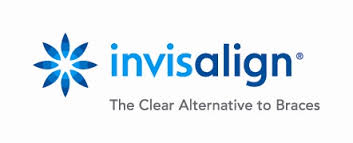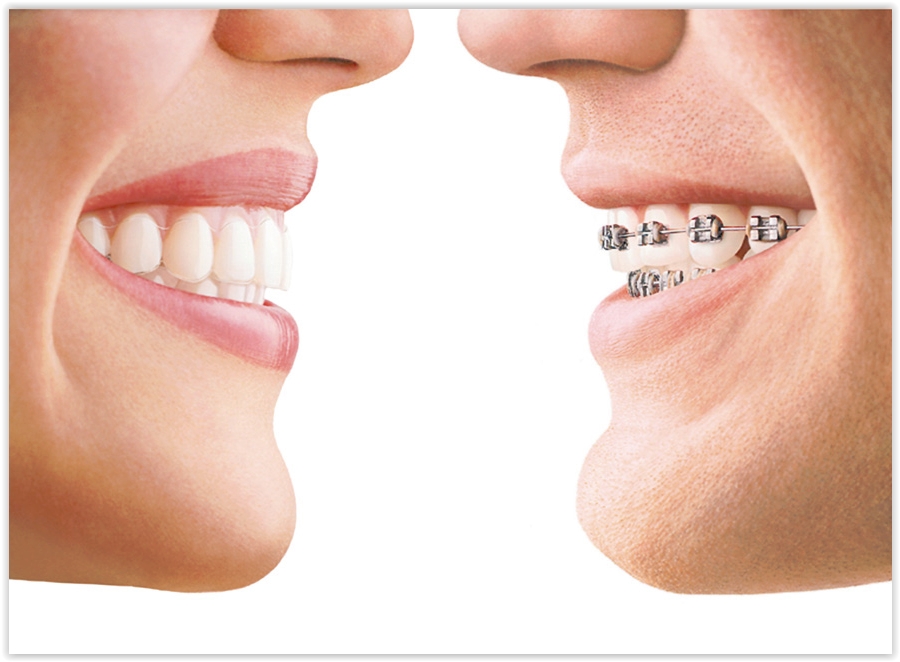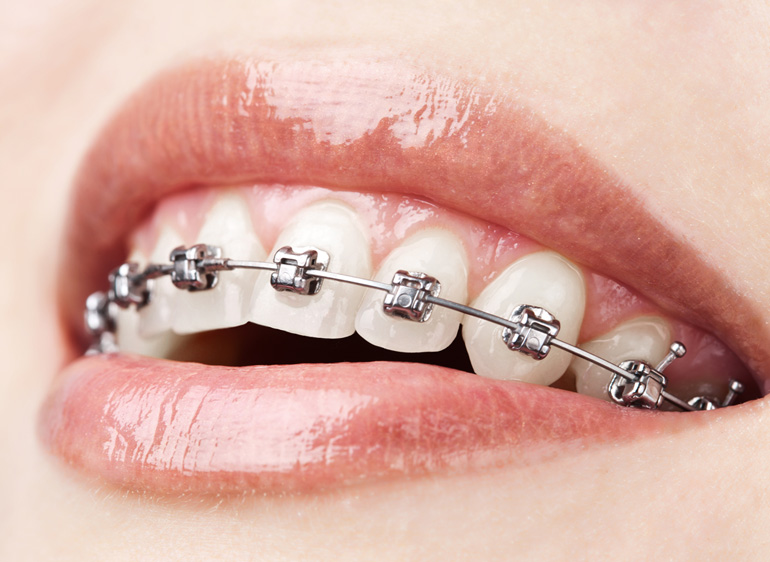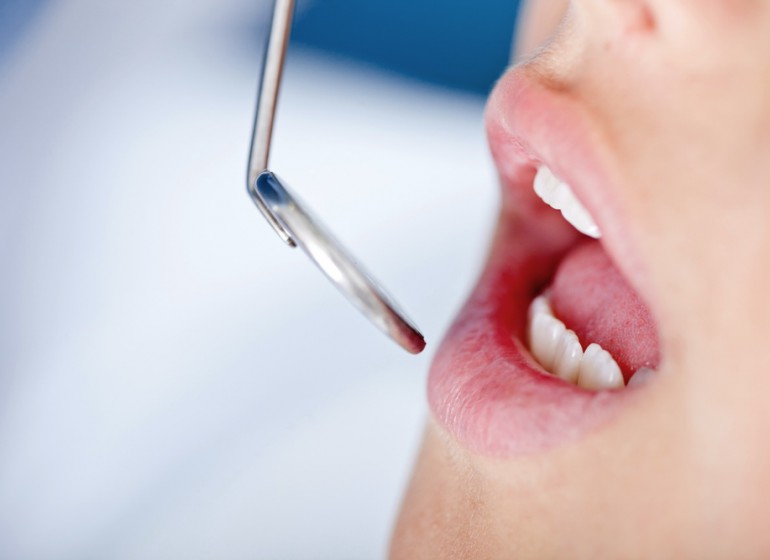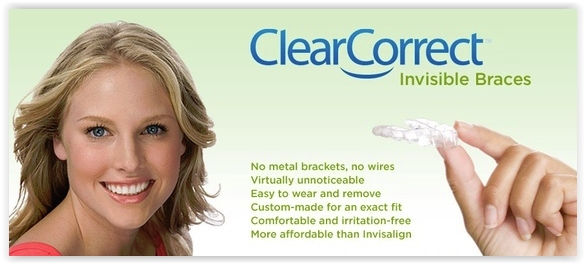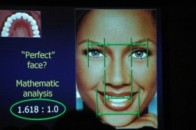Orthodontics in Santa Monica
Santa Monica Advanced Orthodontics
Comprehensive Orthodontic Services
Cost starts at $3,500 and depends on the amount of treatment required.
Invisalign offers a nearly invisible and removable solution for straightening your teeth.
Ideal for teens and adults, Invisalign aligners are custom-made, comfortable, and allow for better hygiene throughout treatment.
At Richard Haber DDS Orthodontic office, Santa Monica Advanced Orthodontics, we offer Invisalign clear aligners.
Invisalign clear aligners are a modern, virtually invisible way to straighten teeth without the need for traditional metal braces. Custom-made for comfort and precision, Invisalign uses a series of removable, clear trays to gradually shift your teeth into alignment. This popular orthodontic treatment is ideal for teens and adults seeking a discreet, convenient option for improving their smile. With Invisalign aligners, you can eat, brush, and floss with ease, making it a flexible choice for busy lifestyles. Whether you're correcting crowded teeth, gaps, or bite issues, Invisalign offers an effective and aesthetically pleasing
Invisalign Clear Aligners
Invisalign offers a nearly invisible and removable solution for straightening teeth. Ideal for teens and adults, Invisalign aligners are custom-made, comfortable, and allow for better hygiene throughout treatment. At Richard Haber DDS Orthodontic office, Santa Monica Advanced Orthodontics, we offer Invisalign clear aligners. Invisalign clear aligners are a modern, virtually invisible way to straighten teeth without the need for traditional metal braces. Custom-made for comfort and precision, Invisalign uses a series of removable, clear trays to gradually shift your teeth into alignment. This popular orthodontic treatment is ideal for teens and adults seeking a discreet, convenient option for improving their smile. With Invisalign aligners, you can eat, brush, and floss with ease, making it a flexible choice for busy lifestyles. Whether you're correcting crowded teeth, gaps, or bite issues, Invisalign offers an effective and aesthetically pleasing solution.
Traditional Metal Braces
Durable and effective, metal braces remain one of the most common and reliable orthodontic treatments. They are perfect for correcting a wide range of alignment issues, including crowding, spacing, and bite problems. At Richard Haber DDS , Santa Monica Advanced Orthodontics , we offer Regular metal braces . Regular Metal braces are a time-tested and highly effective orthodontic treatment for straightening teeth and correcting bite issues. Made from high-grade stainless steel, metal braces use brackets and archwires to gradually move teeth into proper alignment. They are often the most affordable orthodontic option and are ideal for patients of all ages, including teens and adults. While newer treatments like clear aligners are popular, traditional metal braces remain a reliable solution for complex dental cases. If you're looking for a durable and proven method to improve your smile, metal braces may be the perfect choice.
Ceramic Braces
These tooth-colored braces are less noticeable than metal and are popular among image-conscious teens and adults. They provide the same reliable results with a more aesthetic appearance. At Richard Haber DDS Orthodontic office, Santa Monica Advanced Orthodontics, we offer ceramic Braces. Ceramic braces are a popular orthodontic treatment that offers a more discreet alternative to traditional metal braces. Made from tooth-colored or clear materials, ceramic braces blend in with your natural teeth, making them a great option for teens and adults who want a less noticeable way to straighten their smile. Just like metal braces, clear ceramic braces effectively treat a wide range of dental issues, including crooked teeth, overcrowding, and bite misalignment. They provide the same reliable results with added cosmetic appeal, making ceramic braces an excellent choice for those seeking a more subtle orthodontic solution.
Lingual Braces
Lingual braces are placed on the inner side of the teeth, making them virtually invisible from the outside. They are a discreet option for patients who want effective treatment without visible braces. At Richard Haber DDS Orthodontic office, Santa Monica Advanced Orthodontics, we offer Lingual Braces. Lingual braces are a highly effective and discreet orthodontic treatment designed for patients who want to straighten their teeth without visible appliances. Unlike traditional metal braces that are placed on the front of the teeth, lingual braces are attached to the back (tongue side) of the teeth, making them completely hidden from view. This makes them an excellent choice for adults, working professionals, performers, and anyone who wants to maintain a natural appearance while undergoing orthodontic treatment. Lingual orthodontics can correct a wide range of dental issues, including crowding, gaps, overbites, underbites, and crossbites. These hidden braces are custom-made for each patient, ensuring a precise and comfortable fit. While lingual braces may take a short time to adjust to and may slightly affect speech in the beginning, they offer the same powerful results .
Orthodontic Retainers
After your orthodontic treatment, retainers help maintain your beautiful smile. We offer both fixed and removable retainers to suit your needs and ensure long-lasting results.
At Richard Haber DDS Orthodontic office, Santa Monica Advanced
Orthodontics, we offer Orthodontic retainers.
Orthodontic retainers are essential devices used after braces or
Invisalign treatment to maintain your newly aligned smile. Once your teeth
have been straightened, retainers help keep them in place and prevent them
from shifting back to their original position. There are several types of
orthodontic retainers, including removable retainers like Hawley and clear
plastic retainers, as well as fixed or permanent retainers bonded to the
back of the teeth. Wearing your retainer as prescribed by your
orthodontist is crucial for long-term results and a stable bite. Whether
you've completed treatment with metal braces, ceramic braces, or
Invisalign, a custom-fit orthodontic retainer plays a key role in
protecting your investment and preserving your beautiful smile.
Early Interceptive Orthodontic Treatment
For children ages 7-10, early interceptive orthodontics can guide jaw development and correct bite issues before they worsen. Early evaluation can often reduce or eliminate the need for future braces. At Richard Haber DDS Orthodontic office, Santa Monica Advanced Orthodontics, we offer Early interceptive orthodontic treatment Early interceptive orthodontic treatment is a proactive approach designed to address developing dental and jaw issues in children, typically between the ages of 6 and 10. Also known as Phase 1 orthodontic treatment, this early care can help guide proper jaw growth, create space for incoming permanent teeth, and correct harmful oral habits such as thumb sucking or tongue thrusting. By identifying orthodontic problems early, interceptive treatment can reduce the need for more extensive procedures later and may even shorten or simplify future orthodontic care. Common appliances used during early orthodontic treatment include expanders, partial braces, and space maintainers. If your child shows signs of crowded teeth, crossbites, or a misaligned bite, early interceptive orthodontics can provide a healthy foundation for a well-aligned smile and balanced facial
Teen Orthodontics
We offer a full range of orthodontic options for teens, from traditional braces to Invisalign Teen. We focus on effective treatment while considering self-esteem and comfort during this important stage of life. At Richard Haber DDS Orthodontic office, Santa Monica Advanced Orthodontics, we offer Teen orthodontics. Teen orthodontics focuses on straightening teeth and correcting bite issues during the adolescent years, a key time for dental development. Most teens begin orthodontic treatment between the ages of 11 and 16, when most of the permanent teeth have come in and the jaw is still growing making it the ideal time for braces or aligners. Common options for teen orthodontic care include metal braces, ceramic braces, and Invisalign Teen, which offers a nearly invisible and removable alternative. Addressing orthodontic issues early can improve oral health, boost confidence, and prevent future complications. Whether your teen needs to fix crowding, gaps, overbite, or underbite, customized orthodontic solutions for teens can create a healthy, confident smile that lasts a lifetime.
Adult Orthodontics
It's never too late to achieve a straighter smile. Adult orthodontic options include clear aligners and discreet braces that suit your lifestyle and improve your dental health and confidence. At Richard Haber DDS Orthodontic office, Santa Monica Advanced Orthodontics, we offer Adult orthodontics. Adult orthodontics offers effective solutions for straightening teeth, correcting bite issues, and improving overall oral health at any age. More adults than ever are choosing orthodontic treatment to enhance their smile and boost self-confidence. With modern options like clear aligners (Invisalign), ceramic braces, and even lingual braces that are hidden behind the teeth, adults can achieve discreet and convenient treatment tailored to their lifestyle. Whether you're addressing crowding, spacing, or jaw misalignment, adult braces can help improve function, aesthetics, and long-term dental stability. It's never too late to invest in a healthier, straighter smile, and with advances in orthodontic care for adults, treatment is more comfortable and efficient than ever before.
Orthognathic (Jaw) Surgery
Jaw surgery may be necessary for severe bite misalignments, facial imbalance, or airway problems. We work closely with oral surgeons to develop a comprehensive plan that restores function and appearance. Richard Haber DDS Orthodontics, Santa Monica Advanced Orthodontics, Orthognathic surgery. Orthognathic surgery, also known as jaw surgery, is a corrective procedure performed to realign the jaws and improve both function and facial appearance. This type of oral and maxillofacial surgery is often recommended when orthodontic treatment alone isn't enough to fix severe bite problems, jaw misalignment, or facial asymmetry. Conditions treated with jaw surgery include underbites, overbites, open bites, and issues related to breathing, chewing, or speaking. Orthognathic surgery is typically combined with braces or orthodontic treatment before and after the procedure to ensure optimal results.
Space Maintainers
Space maintainers are used in pediatric patients when a baby tooth is lost prematurely. They help ensure proper spacing and alignment for the permanent teeth to come in correctly. At Richard Haber DDS Orthodontics office, Santa Monica Advanced Orthodontics, we offer Orthodontic space maintainers.Orthodontic space maintainers are specialized dental appliances used to preserve space in a child's mouth after the premature loss of a baby tooth. By holding the gap open, these devices prevent adjacent teeth from shifting into the empty space, ensuring there is enough room for the proper eruption of permanent teeth. Space maintainers are crucial in avoiding future orthodontic problems such as crowding, misalignment, and bite issues. They come in various types, including fixed and removable options, tailored to each child's specific needs. Early intervention with space maintainers can simplify or reduce the need for more extensive orthodontic treatment later on, supporting healthy dental development and a well-aligned smile.
Palatal Expanders
These devices are used to widen the upper jaw in growing children. Palatal expanders can create space, improve bite alignment, and help avoid the need for tooth extractions later. At Richard Haber DDS Orthodontics office, Santa Monica Advanced Orthodontics, we offer Orthodontic Palatal expanders. Palatal expanders are orthodontic devices designed to widen the upper jaw (palate) to create more space for teeth alignment and improve bite function. Often used in children and teens during their growth phases, palate expanders help correct crossbites, overcrowding, and narrow arches by gently expanding the maxillary bone. This early orthodontic intervention can prevent the need for tooth extractions and make future braces or aligners more effective. Custom-fitted to the patient's mouth, palatal expanders are typically worn for several months and adjusted periodically to achieve the desired expansion. If your child has a narrow smile or bite issues, a palatal expander can be a key part of successful orthodontic treatment.
Bite Correction Devices
We offer appliances such as Herbst and Forsus devices to correct bite discrepancies like overbites or underbites. These help reposition the jaws for better function and aesthetics. At Richard Haber DDS Orthodontics office, Santa Monica Advanced Orthodontics, we offer Orthodontic Bite correction devices. Bite correction devices are specialized orthodontic appliances used to treat malocclusions such as overbites, underbites, crossbites, and open bites. These devices work by gradually adjusting the position of the teeth and jaws to improve bite alignment, chewing function, and overall oral health. Common types of bite correction appliances include elastics (rubber bands), bite plates, Herbst appliances, and functional appliances like twin blocks. Using these devices in conjunction with braces or aligners can enhance the effectiveness of orthodontic treatment and prevent jaw pain or temporomandibular joint (TMJ) disorders. Properly addressing bite issues with bite correction devices contributes to a balanced smile and long-term dental stability.
TMJ/TMD Treatment
If you experience jaw pain, headaches, or difficulty chewing, you may have temporomandibular joint disorder (TMD). We offer conservative orthodontic solutions to relieve pain and improve jaw function. At Richard Haber DDS Orthodontics office, Santa Monica Advanced Orthodontics, we offer Orthodontic treatment for TMJ (temporomandibular joint) disorders. Orthodontic treatment for TMJ (temporomandibular joint) disorders, also known as TMD treatment, focuses on alleviating jaw pain, discomfort, and dysfunction caused by misaligned teeth or improper bite relationships. By correcting bite issues such as overbite, underbite, or crossbite through braces, clear aligners, or other orthodontic appliances, patients can experience reduced strain on the jaw joints and surrounding muscles. Customized orthodontic care for TMJ/TMD often involves a comprehensive approach, combining bite correction devices, splints, or night guards to improve jaw alignment and function. Early diagnosis and targeted orthodontic treatment for TMD can help prevent chronic jaw pain, headaches, and clicking or popping sounds, leading to better oral health and improved quality of life.
Evolution of the current orthodontic appliances
When it comes to orthodontic appliances, they are divided into two types: removable and fixed. Removable appliances can be taken on and off by the patient as required. On the other hand, fixed appliances cannot be taken off as they remain bonded to the teeth during treatment.
Fixed appliances
Fixed orthodontic appliances are predominantly derived from the edgewise appliance approach, which typically begins with round wires before transitioning to rectangular archwires for improving tooth alignment. These rectangluar wires promote precision in the positioning of teeth following initial treatment. In contrast to the Begg appliance, which was based solely on round wires and auxiliary springs, the Tip-Edge system emerged in the early 21st century. This innovative technology allowed for the utilization of rectangular archwires to precisely control tooth movement during the finishing stages after initial treatment with round wires. Thus, almost all modern fixed appliances can be considered variations on this edgewise appliance system.
Early 20th-century orthodontist Edward Angle made a major contribution to the world of dentistry. He created four distinct appliance systems that have been used as the basis for many orthodontic treatments today, barring a few exceptions. They are E-arch, pin and tube, ribbon arch, and edgewise systems.
E-arch
Edward H. Angle made a significant contribution to the dental field when he released the 7th edition of his book in 1907, which outlined his theories and detailed his technique. This approach was founded upon the iconic "E-Arch" or 'the-arch' shape as well as inter-maxillary elastics.[21] This device was different from any other appliance of its period as it featured a rigid framework to which teeth could be tied effectively in order to recreate an arch form that followed pre-defined dimensions.[22] Molars were fitted with braces, and a powerful labial archwire was positioned around the arch. The wire ended in a thread, and to move it forward, an adjustable nut was used, which allowed for an increase in circumference. By ligation, each individual tooth was attached to this expansive archwire.[8]
Pin and tube appliance
Due to its limited range of motion, Angle was unable to achieve precise tooth positioning with an E-arch. In order to bypass this issue, he started using bands on other teeth combined with a vertical tube for each individual tooth. These tubes held a soldered pin, which could be repositioned at each appointment in order to move them in place.[8] Dubbed the "bone-growing appliance", this contraption was theorized to encourage healthier bone growth due to its potential for transferring force directly to the roots.[23] However, implementing it proved troublesome in reality.
Ribbon arch
Realizing that the pin and tube appliance was not easy to control, Angle developed a better option, the ribbon arch, which was much simpler to use. Most of its components were already prepared by the manufacturer, so it was significantly easier to manage than before. In order to attach the ribbon arch, the occlusal area of the bracket was opened. Brackets were only added to eight incisors and mandibular canines, as it would be impossible to insert the arch into both horizontal molar tubes and the vertical brackets of adjacent premolars. This lack of understanding posed a considerable challenge to dental professionals; they were unable to make corrections to an excessive Spee curve in bicuspid teeth.[24] Despite the complexity of the situation, it was necessary for practitioners to find a resolution. Unparalleled to its counterparts, what made the ribbon arch instantly popular was that its archwire had remarkable spring qualities and could be utilized to accurately align teeth that were misaligned. However, a major drawback of this device was its inability to effectively control root position since it did not have enough resilience to generate the torque movements required for setting roots in their new place.[8]
Edgewise appliance
In an effort to rectify the issues with the ribbon arch, Angle shifted the orientation of its slot from vertical, instead making it horizontal. In addition, he swapped out the wire and replaced it with a precious metal wire that was rotated by 90 degrees in relation—henceforth known as Edgewise.[25] Following extensive trials, it was concluded that dimensions of 22 × 28 mils were optimal for obtaining excellent control over crown and root positioning across all three planes of space.[26] After debuting in 1928, this appliance quickly became one of the mainstays for multibanded fixed therapy, although ribbon arches continued to be utilized for another decade or so beyond this point too.[8]
Labiolingual
Prior to Angle, the idea of fitting attachments on individual teeth had not been thought of, and in his lifetime, his concern for precisely positioning each tooth was not highly appraised. In addition to using fingersprings for repositioning teeth with a range of removable devices, two main appliance systems were very popular in the early part of the 20th century. Labiolingual appliances use bands on the first molars joined with heavy lingual and labial archwires affixed with soldered fingersprings to shift single teeth.
Twin wire
Utilizing bands around both incisors and molars, a twin-wire appliance was designed to provide alignment between these teeth. Constructed with two 10-mil steel archwires, its delicate features were safeguarded by lengthy tubes stretching from molars towards canines. Despite its efforts, it had limited capacity for movement without further modifications, rendering it obsolete in modern orthodontic practice.
Begg's Appliance
Returning to Australia in the 1920s, the renowned orthodontist, Raymond Begg, applied his knowledge of ribbon arch appliances, which he had learned from the Angle School. On top of this, Begg recognized that extracting teeth was sometimes vital for successful outcomes and sought to modify the ribbon arch appliance to provide more control when dealing with root positioning. In the late 1930s, Begg developed his adaptation of the appliance, which took three forms. Firstly, a high-strength 16-mil round stainless steel wire replaced the original precious metal ribbon arch. Secondly, he kept the same ribbon arch bracket but inverted it so that it pointed toward the gums instead of away from them. Lastly, auxiliary springs were added to control root movement. This resulted in what would come to be known as the Begg Appliance. With this design, friction was decreased since contact between wire and bracket was minimal, and binding was minimized due to tipping and uprighting being used for anchorage control, which lessened contact angles between wires and corners of the bracket.
Tip-Edge System
Begg's influence is still seen in modern appliances, such as Tip-Edge brackets. This type of bracket incorporates a rectangular slot cutaway on one side to allow for crown tipping with no incisal deflection of an archwire, allowing teeth to be tipped during space closure and then uprighted through auxiliary springs or even a rectangular wire for torque purposes in finishing. At the initial stages of treatment, small-diameter steel archwires should be used when working with Tip-Edge brackets.
Contemporary edgewise systems
Throughout time, there has been a shift in which appliances are favored by dentists. In particular, during the 1960s, when it was introduced, the Begg appliance gained wide popularity due to its efficiency compared to edgewise appliances of that era; it could produce the same results with less investment on the dentist's part. Nevertheless, since then, there have been advances in technology and sophistication in edgewise appliances, which led to the opposite conclusion: nowadays, edgewise appliances are more efficient than the Begg appliance, thus explaining why it is commonly used.
Automatic rotational control
At the beginning, Angle attached eyelets to the edges of archwires so that they could be held with ligatures and help manage rotations. Now, however, no extra ligature is needed due to either twin brackets or single brackets that have added wings touching underneath the wire (Lewis or Lang brackets). Both types of brackets simplify the process of obtaining moments that control movements along a particular plane of space.
Alteration in bracket slot dimensions
In modern dentistry, two types of edgewise appliances exist: the 18- and 22-slot varieties. While these appliances are used differently, the introduction of a 20-slot device with more precise features has been considered but not pursued yet.[27]
Straight-wire bracket prescriptions
Rather than rely on the same bracket for all teeth, L.F. Andrews found a way to make different brackets for each tooth in the 1980s, thanks to the increased convenience of bonding.[28] This adjustment enabled him to avoid having multiple bends in archwires that would have been needed to make up for variations in tooth anatomy. Ultimately, this led to what was termed a "straight-wire appliance" system - an edgewise appliance that greatly enhanced its efficiency.[29] The modern edgewise appliance has slightly different construction than the original one. Instead of relying on faciolingual bends to accommodate variations among teeth, each bracket has a correspondingly varying base thickness depending on the tooth it is intended for. However, due to individual differences between teeth, this does not completely eliminate the need for compensating bends.[30] Accurately placing the roots of many teeth requires angling brackets in relation to the long axis of the tooth. Traditionally, this mesiodistal root positioning necessitated using second-order, or tip, bends along the archwire. However, angling the bracket or bracket slot eliminates this need for bends.
Given the discrepancies in inclination of facial surfaces across individual teeth, placing a twist, otherwise known as third-order or torque bends, into segments of each rectangular archwire was initially required with the edgewise appliance. These bends were necessary for all patients and wires, not just to avoid any unintentional movement of suitably placed teeth or when moving roots facially or lingually. Angulation of either brackets or slots can minimize the need for second-order or tip bends on archwires. Contemporary edgewise appliances come with brackets designed to adjust for any facial inclinations, thereby eliminating or reducing any third-order bends. These brackets already have angulation and torque values built in so that each rectangluar archwire can be contorted to form a custom fit without inadvertently shifting any correctly positioned teeth. Without bracket angulation and torque, second-order or tip bends would still be required on each patient's archwire.
Methods

A typical treatment for incorrectly positioned teeth (malocclusion) takes from one to two years, with braces being adjusted every four to 10 weeks by orthodontists,[31] while university-trained dental specialists are versed in the prevention, diagnosis, and treatment of dental and facial irregularities. Orthodontists offer a wide range of treatment options to straighten crooked teeth, fix irregular bites, and align the jaws correctly.[32] There are many ways to adjust malocclusion. In growing patients, there are more options to treat skeletal discrepancies, either by promoting or restricting growth using functional appliances, orthodontic headgear, or a reverse pull facemask. Most orthodontic work begins in the early permanent dentition stage before skeletal growth is completed. If skeletal growth has completed, jaw surgery is an option. Sometimes teeth are extracted to aid the orthodontic treatment (teeth are extracted in about half of all the cases, most commonly the premolars).[33]
Orthodontic therapy may include the use of fixed or removable appliances. Most orthodontic therapy is delivered using appliances that are fixed in place,[34] for example, braces that are adhesively bonded to the teeth. Fixed appliances may provide greater mechanical control of the teeth; optimal treatment outcomes are improved by using fixed appliances.
Fixed appliances may be used, for example, to rotate teeth if they do not fit the arch shape of the other teeth in the mouth, to adjust multiple teeth to different places, to change the tooth angle of teeth, or to change the position of a tooth's root. This treatment course is not preferred where a patient has poor oral hygiene, as decalcification, tooth decay, or other complications may result. If a patient is unmotivated (insofar as treatment takes several months and requires commitment to oral hygiene), or if malocclusions are mild.
The biology of tooth movement and how advances in gene therapy and molecular biology technology may shape the future of orthodontic treatment.[35]
Braces

Braces are usually placed on the front side of the teeth, but they may also be placed on the side facing the tongue (called lingual braces). Brackets made out of stainless steel or porcelain are bonded to the center of the teeth using an adhesive. Wires are placed in a slot in the brackets, which allows for controlled movement in all three dimensions.
Apart from wires, forces can be applied using elastic bands,[36] and springs may be used to push teeth apart or to close a gap. Several teeth may be tied together with ligatures, and different kinds of hooks can be placed to allow for connecting an elastic band.[37][36]
Clear aligners are an alternative to braces, but insufficient evidence exists to determine their effectiveness.[38]
Treatment duration
The time required for braces varies from person to person as it depends on the severity of the problem, the amount of room available, the distance the teeth must travel, the health of the teeth, gums, and supporting bone, and how closely the patient follows instructions. On average, however, once the braces are put on, they usually remain in place for one to three years. After braces are removed, most patients will need to wear a retainer all the time for the first six months, then only during sleep for many years.[39]
Headgear
Orthodontic headgear, sometimes referred to as an "extra-oral appliance", is a treatment approach that requires the patient to have a device strapped onto their head to help correct malocclusion—typically used when the teeth do not align properly. Headgear is most often used along with braces or other orthodontic appliances. While braces correct the position of teeth, orthodontic headgear—which, as the name suggests, is worn on or strapped onto the patient's head—is most often added to orthodontic treatment to help alter the alignment of the jaw, although there are some situations in which such an appliance can help move teeth, particularly molars.

Whatever the purpose, orthodontic headgear works by exerting tension on the braces via hooks, a facebow, coils, elastic bands, metal orthodontic bands, and other attachable appliances directly into the patient's mouth. It is most effective for children and teenagers because their jaws are still developing and can be easily manipulated. (If an adult is fitted with headgear, it is usually to help correct the position of teeth that have shifted after other teeth have been extracted.) Thus, headgear is typically used to treat a number of jaw alignment or bite problems, such as overbite and underbite.[40]
Palatal expansion
Palatal expansion can be best achieved using a fixed tissue-borne appliance. Removable appliances can push teeth outward but are less effective at maxillary sutural expansion. The effects of a removable expander may look the same as they push teeth outward, but they should not be confused with actually expanding the palate. Proper palate expansion can create more space for teeth as well as improve both oral and nasal airflow.[41]
Jaw surgery
Jaw surgery may be required to fix severe malocclusions.[42] The bone is broken during surgery and stabilized with titanium (or bioresorbable) plates and screws to allow for healing to take place.[43] After surgery, regular orthodontic treatment is used to move the teeth into their final position.[44]
During treatment
To reduce pain during the orthodontic treatment, low-level laser therapy (LLLT), vibratory devices, chewing adjuncts, brainwave music, or cognitive behavioral therapy can be used. However, the supporting evidence is of low quality, and the results are inconclusive.[45]
Post treatment
After orthodontic treatment has been completed, there is a tendency for teeth to return, or relapse, back to their pre-treatment positions. Over 50% of patients have some reversion to pre-treatment positions within 10 years following treatment.[46] To prevent relapse, the majority of patients will be offered a retainer once treatment has been completed and will benefit from wearing their retainers. Retainers can be either fixed or removable.
Removable retainers
Removable retainers are made from clear plastic, and they are custom-fitted for the patient's mouth. It has a tight fit and holds all of the teeth in position. There are many types of brands for clear retainers, including Zendura Retainer, Essix Retainer, and Vivera Retainer.[47] A Hawley retainer is also a removable orthodontic appliance made from a combination of plastic and metal that is custom-molded to fit the patient's mouth. Removable retainers will be worn for different periods of time, depending on the patient's need to stabilize the dentition.[48]
Fixed retainers
Fixed retainers are a simple wire fixed to the tongue-facing part of the incisors using dental adhesive and can be specifically useful to prevent rotation in incisors. Other types of fixed retainers can include labial or lingual braces, with brackets fixed to the teeth.[48]
Clear aligners
Clear aligners are another form of orthodontics commonly used today, involving removable plastic trays. There has been controversy about the effectiveness of aligners such as Invisalign or Byte; some consider them to be faster and more freeing than the alternatives.[49]
Dental crowding
If your teeth overlap, consider going with Invisalign. The regular use of aligners can help with dental crowding by pushing your displaced teeth back into where they are supposed to be for normal functioning. Address this problem as soon as possible to prevent tartar, plaque and gum disease.
Teeth Spacing
This is when there are irregular openings between your teeth because some of them are missing, or your jaw is abnormally shaped. Do dental gaps ring a bell to you? Come to Santa Monica Advanced Orthodontics for the best invisible braces in Sydney to close them once and for all.
Crossbite
Invisalign also proves to fix various misalignments, one of which is crossbite. Think of it as the condition that comes with your upper jaw falling inside the lower one. Crossbite often occurs in children, increasing the likelihood of gum disease and tooth damage. That is why it should be treated once noticed.
Overbite
Common in children as well as grown-ups, overbite is when your top teeth noticeably protrude and do not match your lower ones. This condition is fraught with many other dental issues, like sore gums, jaw problems, etc. Find out the cost of clear braces for adults or kids at Santa Monica Advanced Orthodontics to make your bite right.
Underbite
If your top teeth appear to be behind your lower ones, you are likely to have an underbite. There's a common misconception that it can be only fixed with metal straighteners. Invisalign can also do the trick. Plus, the prices for clear braces are not so higher than those for traditional options.
If you have been dreaming about a beautiful smile for a long time, but you can't resolve wearing traditional braces, we have an ideal solution for you. Invisalign trays appear to replace conventional teeth braces allowing to make the same progress. Trays have proved successful for bite correction in the following cases:
- Gapped Teeth
- Under and Overbite
- Open and Cross Bite
- Overcrowded Teeth
Trays are custom-made for you. They straight your teeth making gentle pressure on them to put in place. Invisalign trays are perfectly engineered to shift your teeth slightly moving them horizontally or vertically or rotating them if needed.
Our Invisalign dentist working in Santa Monica can consult you and if your bite can be corrected with the help of Invisalign trays, our doctor will make imprints of your teeth. And we will send your imprints to the laboratory where your trays will be manufactured. They will be manufactured using the 3-D model of your jaws.
You should wear the trays minimum 20 hours a day to get faster results. Don't forget to take them out while eating or drinking. Brushing your teeth after a meal will help eliminate staining. You control the process of treatment as opposed to the usual braces. You can take them out when you're going to a party, etc.
Main advantages of Invisalign trays
- They don't affect the speech as well as your overall look.
- You can see the first results in two weeks.
- Trays are easy to clean.
- They are removable. Take them out anytime you need.
- You don't have to spend long hours at your dentist adjusting them.
Now you can order Invisalign trays in Santa Monica at the affordable prices. We are located at 1260 15th St #701 Santa Monica CA 90404. If you get interested, schedule an appointment right now! You can do it via phone (310) 393-7766
What to expect during your treatment at Santa Monica Advanced Orthodontics and Invisalign
If you have decided to transform your smile by investing in Invisalign, you may feel excited and anxious at the same time. But knowing what to expect can help you be sure you've selected the right route for your smile. Our team of experienced Invisalign dentist in Santa Monica will determine the most effective treatment for your teeth in just a few steps.
The first appointment
The initial consultation involves a comprehensive examination of your teeth, a series of X-rays and digital impressions of the mouth. We will also explain what goes into the Invisalign price in Sydney, discuss your cosmetic dentistry expectations and whether Invisalign braces can help meet them.
Even though this teeth alignment method is highly universal, not everyone is a perfect candidate for it. If there's a better way to address your dental problems, your dentist will advise you on other types of teeth straightening in Santa Monica. But if Invisalign is good for you, you'll get a customised treatment plan right off the bat.
Getting ready
You will get a digital preview of what your smile will look like once you take off Invisalign braces. Our dentists will use X-rays, photographs and other methods to design an exact mould of your teeth. It'll then be used for creating your custom Invisalign braces in Santa Monica. Once the aligners are ready, you'll get a notification for the next appointment.
Trying on your first Aligners
When you come to Santa Monica Advanced Orthodontics to get your first invisible braces in Santa Monica, your dentist will help you try them on and put them in place. Minor attachments may be needed to obtain a better result until you get used to your Invisalign braces and ensure they fit. Installing these attachments and trays is a painless procedure.
Your dentist will then get down to brass tacks of the aftercare routine and set up an appointment schedule for you. From now on, you can start your exciting journey toward your perfect smile and increased confidence.
Follow-up appointments
Each Invisalign aligner is made to allow for a slight teeth movement. Once it gets the job done, you receive the second set of Invisalign trays. It takes about a few weeks from the moment you get the first aligners, but the exact timing may vary.
When you opt for Invisalign in Santa Monica CA , you should be aware that the series of aligners make up the whole process. But unlike standard braces, you don't have to see your dentist every other day. There's some flexibility about follow-up appointments for your convenience while still ensuring your treatment goes as planned.
Showing off your radiant smile
The severity of misalignment may affect treatment duration and the cost of clear braces in Santa Monica, as you may need larger sets to straighten your teeth. But if you follow all the recommendations, you'll surely get your dazzling smile without breaking the bank.
At Santa Monica Advanced Orthodontics, we will oversee your progress and adjust the treatment process for the best straightening results!
Special features designed to compensate for the eruption of canines, second premolars and second molars.
To find out more about Invisalign for teenagers, please talk to your Invisalign Provider who'll be able to suggest the best treatment option for you.
Cost
Is Invisalign treatment more expensive than braces?
How much does Invisalign treatment cost without orthodontic cover in your health insurance?
What does orthodontic cover typically include?
How do I know whether my insurance covers Invisalign treatment?
How do I know if my dentist or orthodontist accepts my insurance?
What is a HSA?
What is the advantage of an FSA or HSA?
How can I use my FSA or HSA to pay for Invisalign treatment?
Process
How will Invisalign treatment straighten my teeth?
What are the primary benefits of Invisalign treatment?
Am I guaranteed to have straight teeth with Invisalign treatment?
Ready to Begin?
Book a consultation with Dr. Haber and discover if Invisalign is the right fit for your smile.
Tel: (310) 393-7766
t
Visit Home Page
